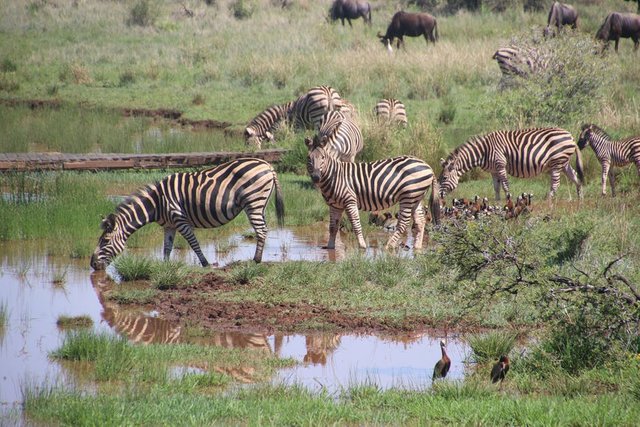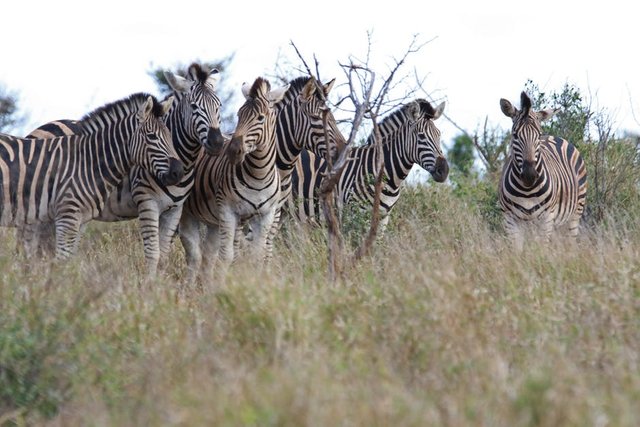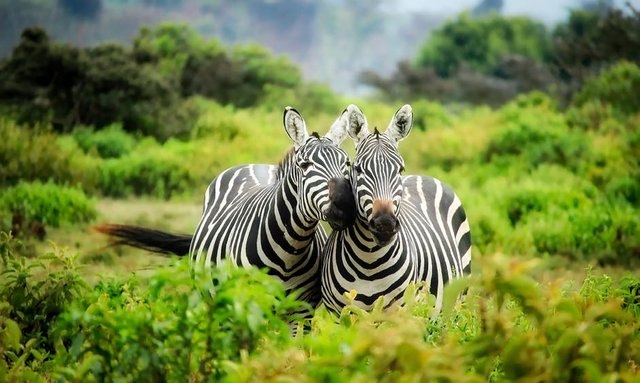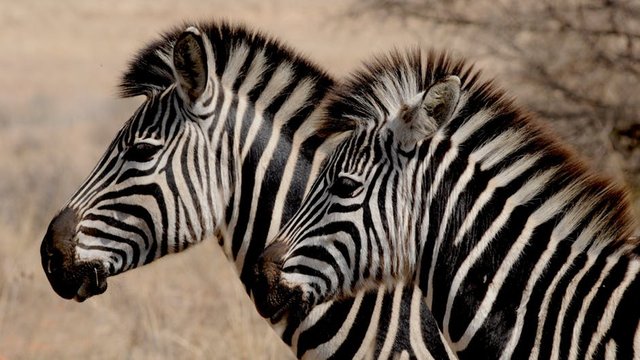ABOUT ZEBRA
BASIC FACTS ABOUT ZEBRAS
Closely related to horses and donkeys, the zebra (subgenuses Hippotigris and Dolichohippus) is best known for its black and white striped body. In fact, zebra stripe patterns are unique to each individual. These stripes are believed to be camouflage devices that help zebras hide well in the grass.

DIET
Zebras are herbivorous and primarily eat a variety of grasses. They are also known to eat shrubs, herbs, twigs, leaves and bark.
POPULATION
Overall, plains zebras number at around 750,000. Historically, there were over 15,000 Grevy's zebras. However, there are only about 2,500 remaining today. There are 600-700 cape mountain zebras and around 800-1300 Hartmann's mountain zebras in the wild.

RANGE
Plains zebra are found on the savannas from Sudan to northern Zimbabwe in eastern Africa. Grevy's zebras are now mostly restricted to parts of northern Kenya. Mountain zebras occur in southwestern Africa with cape mountain zebras in South Africa and Hartmann's mountain zebras in Namibia and Angola.
BEHAVIOR
Zebras as very social animals and live in large groups called 'harems.' Plains and mountain zebras live in harems that are made up of one stallion and up to six mares and their young, while Grevy's zebras come together as groups for short periods of time. Sometimes herds come together to form temporary groups of up to 30 members. Zebras sleep standing up, and only when they are in groups that can warn them of danger. If they spot a predator, they will bark or whinny loudly to warn the others in the group.

REPRODUCTION
Mating Season: Year round and based on species.
Gestation: 12-13 months.
Litter size: 1 foal.
Zebra foals are born with brown and white stripes as opposed to black and white stripes. Mares generally keep all other zebras away for 2-3 days until her foal recognizes her by sight, voice and smell.
THREATS
The zebra's biggest threats are habitat loss due to ranching and farming and competition for water with livestock. They are also hunted for their skins.
In the range of the Grevy's zebra, where survival of young is linked to the availability of forage, climate change is exacerbating droughts on already-degraded rangeland. Droughts also force the animals to congregate at remaining water sources, increasing the incidence of disease transmission.
Source: https://defenders.org/zebra/basic-facts

This post has received a 26.71% upvote from thanks to: @nayanbd666.
thanks to: @nayanbd666.
For more information, click here!!!!
Try the new Minnowhelper Bots for more information here
Help support @minnowhelper and the bot tracker by voting for @yabapmatt for Steem witness! To vote, click the button below or go to https://steemit.com/~witnesses and find @yabapmatt in the list and click the upvote icon. Thank you.
Voting for @yabapmatt